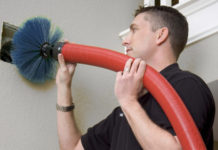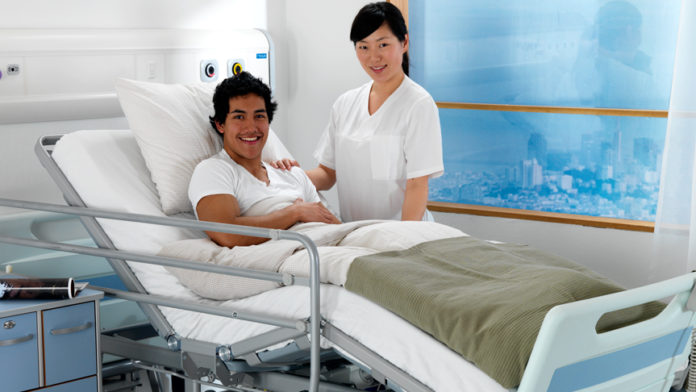Ballpark estimate: $500 to $5,000+
Perhaps you’re recovering at home from an illness, injury, or surgical procedure and will be laid up in bed for an extended period of time. You may need to buy or rent a hospital bed (sometimes called a medical bed) to accommodate your physical needs and also help you be more comfortable.
Hospital beds or medical beds have special features that enable them to be adjusted, such as by raising or lowering the head or the feet, or changing the height of the entire mattress. Most hospital beds can also be configured to accommodate the use of various medical equipment.
Hospital Bed Options
There are several different types of hospital beds from which to select, and the one that will work best for you will depend on your specific circumstances. For instance, there’s a manual hospital bed, a semi-electric hospital bed, and an electric hospital bed. Here’s what each one offers:
- Manual hospital bed: This type of hospital bed uses a hand crank to make adjustments to the height of the mattress, as well as to lift the head and/or the foot of the bed. Most people today prefer to have at least some automation in a bed, so this style is used less often than in the past, but it is also the most affordable option.
- Semi-electric hospital bed: This is a common type of hospital bed that uses an electric control panel so users can easily adjust the head and/or foot of the bed. But the height of the mattress is adjusted with a hand crank, so it does require some effort to operate. This is a good middle-of-the-road cost option.
- Electric hospital bed: This style bed, which is often referred to as an “adjustable bed,” is controlled by a master panel that makes it easy to change the various settings with just a push of a button, either through a control panel, remote control, or even through controls built right into the side rails. This style bed costs more than the other types but it’s the most convenient medical bed to use for patients and caregivers, and therefore, it’s also the most popular.
How to Choose
There are a number of factors to consider when determining which bed will be best for your circumstances. For instance, you’ll need to know who will be doing the adjustments and how often. If the patient wants to be able to move the head and foot of the bed frequently by him or herself, or to raise and lower the mattress height, such as to make it easier to get in and out of bed, then an electric model will be well worth the added expense. But if the bed settings won’t be changed very often, or you have a nurse or caregiver who can easily operate the hand-crank as needed (and who doesn’t mind bending over to use this feature), you may be able to get away with a manual model, which will be less expensive.
You should also consider where you will be locating the bed. If it’s on the ground floor in a room with easy access, any bed will work, but if the bed needs to be located upstairs or in a room with a narrow doorway, you will want to find a bed that will be easy to transport and set up. You’ll also need to consider if you will need the bed long-term, in which case you might consider investing in a higher quality model.
Other Features to Consider
There are a number of other features available in hospital beds that can make you more comfortable or safer. These include size (do you want a twin bed, or a wider full size?), as well as side rails to prevent falling (these can be moved automatically or can be manually operated, and as mentioned above, they can sometimes have the control buttons embedded right in them for easy access by the patient). You may also need a built-in scale to allow weighing without having to get up, wheels to move the bed easily but that also lock in place to keep the bed stationary, poles to support intravenous bags, oxygen, and other supplies, and a tray table for meals and activities. In addition, a bed with low air flow can make it easier to turn patients and also help prevent bed sores from forming, while a bed with vibration can be helpful to break up chest congestion. Finally, there are different types of mattresses to consider, including foam or innerspring. (Note that the low air flow mattress requires a special air-filled mattress.) Bariatric patients also need to select a mattress and box spring that is extra sturdy.
Where to Shop
You can purchase a hospital bed in person through a local medical supply store, or you can order it through a medical supply catalogue or online medical supply store. You can also ask your physician to recommend a hospital bed supplier.
Some people prefer to rent a hospital bed from a medical supply vendor if they will only need it over the short term. When renting, ask if your payments can be used toward the purchase price if you decide to buy before your rental period is up.
Some of the types of online medical bed suppliers that allow you to shop from the convenience of your home include 1800wheelchair.com, ProgressMobility, and VitalityMedical, among many others.
The Cost of a Hospital Bed
When budgeting for the cost of a hospital bed, you’ll need to determine the style bed you need and whether you will buy or rent. If buying, a good quality steel twin size manual bed starts at about $500, while you can find a reliable semi-electric bed starting at about $700, and an electric bed costs about $1,000-$2,000 for a basic model, or a sturdier or bariatric model with more features, such as full-sized and with a low air loss mattress, will be in the $2,500 to $5,000 range and up. If money is no object, you can also splurge on a luxury king-sized electric bed with wooden trim panels and a plush mattress for as much as $6,500 or higher. With any bed, it’s important to find out if the mattress is included or comes at an extra cost. Most beds sold as “packages” include the mattress, but if you want to upgrade to a higher quality, there will likely be an additional charge.
Adding accessories like an overbed tray, a trapeze lift, side rails, and an alarm will add about $100+ per item to the price.
Hospital Bed Rental Costs
If you prefer to rent a hospital bed, you are not likely to find a manual bed for rent. But a semi-electric starts at about $200 to $300 a month, while a full electric hospital bed starts at $250 to $400 a month for a basic model. A bariatric electric model can run about $450 a month or more. Remember that the higher quality beds with better mattresses and additional features will increase the cost.
Insurance Coverage
If you have a documented medical need for a hospital bed, you may be able to get at least some of the cost to buy or rent under your insurance plan, or through Medicaid and Medicare.
Refurbished Models
If your insurance won’t cover the cost of a hospital bed, or won’t pay for the model or features you want, one way to save money is to look for a refurbished model that has all of the features you need but at a reduced price. You can check Craigslist, Ebay, and your local classifieds for listings.














































